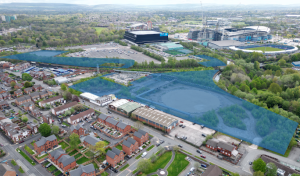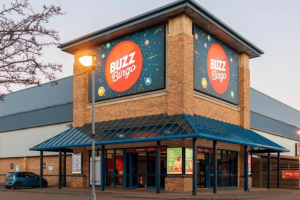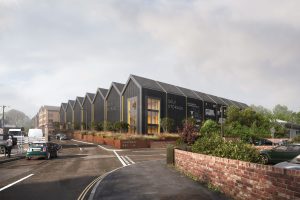In Conversation With…Chris Oglesby

DEVELOPER Bruntwood’s foray into the new build commercial property market may have just lasted just three years – from the completion of Manchester’s 1 New York St in 2009 to its £42m sale to Invesco in late January – but this doesn’t mean the firm is scaling back its ambitions.
The company is set to use the proceeds to buy the 209,000 sq ft Centre City office block in Birmingham and embark on one of its trademark refurbishments to create what chief executive Chris Oglesby describes as “luxury refurbished space”.
“The prime sector has been seeing low yields throughout the recession and the gap between that and the likes of a Centre City have been growing.
“It’s an opportunity for us to take the money we’ve made out of a prime asset and recycle that capital,” he said.
“Bruntwood has grown by taking on problem buildings and then restoring them. A few years ago, it seemed like there weren’t any problem buildings but we’ve got them back again now.”
Oglesby is much more confident on the long-term prospects for key city-regions such as Birmingham, Leeds and Bruntwood’s home city of Manchester than the forecasts made by many consultancies.
Although the market has been tough for many parts of the property sector, he argues that it hasn’t led to a great decline in employee numbers.

“When I came back up from London in 1991, I didn’t know what the future of Manchester was going to be. With this recession, you can see that it is moving in the right direction and it will be stronger going forwards.”
Within its home city, Bruntwood is concentrating on opportunities in the science and technology and digital & creative sectors along the Corridor – a stretch of land on Oxford Road between the city’s universities and the central business district (CBD).
It has already been appointed development partner of a £60m project to redevelop Manchester Business School’s campus, while work on converting the former Royal Eye Hospital into a new £21m bio-medical research facility will start on site “”within the next few months”.
“We’re now in a position in Manchester where we can be sector-specific. That’s something you can only do when you have scale. That doesn’t meant we won’t do any more in the CBD, but the hole in our offer in the city isn’t the CBD.”
In other markets, however, Bruntwood’s focus is on taking advantage of the increasing gap in valuations between prime and secondary properties by picking up and restoring unloved buildings.
In Birmingham, for instance, he said that Centre City “would be a very significant acquisition for us”.
The success of the McLaren building (right), which was bought two years ago and is now almost full after a refurbishment, convinced Bruntwood of the opportunities in the Birmingham market.
Oglesby said Birmingham has a large stock of buildings which are ripe for refurbishment.
“The market doesn’t really have that luxury refurbished product,” he said.
In Leeds, meanwhile, the company is looking to secure a number of pre-lets before embarking on any redevelopment of the 14-storey City House scheme above the mainline train station.
“There are significant fixed costs attached to carrying out building work directly above a station,” he said.

“We had a big success in signing Premier Inn to Hepworth Point and 14 King St has done well,” said Oglesby. “Leeds is such a tight city that the amount of office space is probably half that of Manchester and it doesn’t have some of the oversupply issues that other cities have.
“We’re actively looking for acquisitions in Leeds, and we’ve got a couple of sites identified at the moment.”
A city in which oversupply is more of an issue is Liverpool, where the company holds around 800,000 sq ft of space – or 12% of the total stock.
A new report by CBRE states that Grade A stock increased in the city by 49% during the second half of 2011 as English Cities Fund’s No.4 St Paul’s Square came onto the market. It predicted that although headline rents would remain stable, landlords were offering greater incentives on leases, thereby reducing net effective rents.
Mr Oglesby said that the impact of public funding for schemes like No.4 St Paul’s Square means that rents are effectively subsidised.
“There is no question that St Paul’s Square has helped to reposition the market, but it’s a habit that the city needs to get itself out of. We need to see sustainable buildings.”
Liverpool’s strong commercial history means it has a greater stock of unused buildings than other cities, which offers opportunities for redevelopment. Demand, however, remains uncertain – particularly at SME level.
“There’s no question that we could do with seeing more activity in the market, though there is more than than the popular perceptions. There are some good, big enquiries out there for the small amount of vacant space we’ve got at The Plaza,” he said.
He argues that Liverpool, Manchester and Leeds are likely to benefit from “northshoring” by law firms as competition increases in the sector, and that there will be a general “pull from London” by entrepreneurial businesses as the City attracts more multinationals, making rents even more expensive.
“A recession is great for that – for making people think about their costs and for finding better ways of doing things.”









